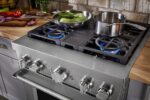How to Fit and Wear Body Armor: Complete Guide for Maximum Protection

Properly fitted body armor is critical for those in high-risk professions such as law enforcement, military, and security, as well as for personal protection. A well-fitted vest not only enhances safety by providing maximum coverage but also ensures greater mobility. This guide equips you with the knowledge to achieve the best possible fit, improving both protection and comfort. By understanding how to measure, adjust, and care for your protective gear, you’ll be better prepared to safeguard yourself and perform effectively in challenging situations. This guide outlines the key aspects of body armor fitting to
In this article, we’ll discuss:
- The different types of body armor and their specific uses
- The NIJ rating system and levels of protection
- How to properly measure and choose the correct size for your body armor
- A step-by-step guide to wearing and adjusting your armor
- Tips for achieving optimal placement and weight distribution
- Maintenance and care practices to extend the life of your armor
- The importance of regular inspections and timely replacements
- How to enhance comfort and performance with proper wear
- Frequently asked questions about body armor
Understanding Different Types of Body Armor
Soft Armor
Soft armor is lightweight and flexible, providing a high level of mobility. It is typically used in bulletproof vests designed for concealed wear, making it ideal for situations where discretion is essential. The advantages of soft armor include enhanced comfort and concealability, making it suitable for low-risk environments. However, it generally offers less protection compared to hard armor.
Plate Armor
Plate armor is designed for high-threat environments and offers greater ballistic protection. Although it is heavier and can restrict movement, it is capable of stopping high-velocity rifle rounds. Plate armor is often used in conjunction with tactical gear to maximize protection in dangerous situations.
Plate Carriers
Modular plate carriers offer a versatile and adaptable solution for body armor needs. Their modular design allows users to adjust the level of protection and comfort based on specific situations. By accommodating hard armor plates of various sizes and threat levels, plate carriers enable a customized approach to personal protection. This flexibility makes them ideal for individuals and organizations with diverse operational requirements that need to tailor their armor systems accordingly.
Other Types of Armor
In addition to common soft and hard armor, there are specialized protective gear types designed for specific threats. Stab-resistant armor is engineered to guard against knife attacks and other sharp-edged weapons, making it essential for correctional officers and security personnel. Likewise, spike-resistant armor provides protection against pointed threats such as needles or ice picks, offering an extra layer of security in environments where such hazards may arise. These specialized armors broaden the range of protection options available, ensuring individuals can choose the most suitable gear for their unique needs.
Understanding the NIJ Rating System
The National Institute of Justice (NIJ) rating system classifies body armor based on the levels of protection it offers against various ballistic threats. NIJ ratings provide a standardized way to assess the protective capabilities of different armor types. Here’s a brief overview:
- Level II: Protects against 9mm and .357 Magnum rounds. Commonly found in soft armor, it is suitable for low-risk environments.
- Level IIIA: Offers higher protection against .44 Magnum and 9mm submachine gun rounds. Often found in soft armor, it provides a good balance of mobility and protection.
- Level III: Designed to stop 7.62mm FMJ (full metal jacket) rifle rounds. Typically used in plate armor, it offers robust protection for high-threat situations.
- Level IV: Provides the highest level of protection, capable of stopping .30 caliber armor-piercing rifle rounds. Found in heavy plate armor, it is ideal for military and high-risk law enforcement operations.
Understanding these ratings helps users select the appropriate level of protection based on specific threats they might encounter.
Now that we’ve explored the different levels of protection, let’s discuss how to measure for body armor and find the right size.
Body Armor Sizing Guide: Finding the Right Size for You
How to Measure Chest Circumference for Body Armor
- Use a Flexible Measuring Tape: Ensure you have a soft, flexible measuring tape to obtain accurate measurements around the curves of your body.
- Stand Naturally: Stand upright in a relaxed, natural position with your arms at your sides. Avoid puffing out your chest or holding your breath, as this can distort the measurement.
- Measure at the Widest Point: Wrap the measuring tape around the fullest part of your chest, typically across the nipples. Ensure the tape is level all the way around and snug but not tight to guarantee an accurate measurement that allows for a comfortable fit.
- Record the Measurement: Note the measurement in inches or centimeters, depending on the sizing chart you will be using.
Step-by-Step Guide to Properly Adjust and Fit Body Armor
How to Don and Adjust Body Armor for a Proper Fit
- Put on the Carrier Vest: Wear the carrier vest like a jacket, ensuring the front panel is centered on your chest and the back panel covers your upper back.
- Adjust the Shoulder Straps: Tighten or loosen the shoulder straps to ensure the vest sits comfortably on your shoulders without digging in. The top of the front plate should rest just below your collarbone.
- Secure the Side Straps: Fasten the side straps snugly to eliminate any looseness, but avoid over-tightening. The vest should fit close to your body without restricting movement or breathing.
- Insert the Plates: Slide the ballistic plates into their designated pockets on the front and back of the vest. Ensure they are properly seated to cover your vital organs.
- Fine-Tune the Fit: Check the alignment of the plates to ensure they do not shift or move when you bend or twist. Adjust the straps as needed to maintain a secure fit.
- Test Mobility: Move your arms and torso to ensure the armor allows for a full range of motion without creating gaps. Make any necessary adjustments to the straps to balance mobility and protection.
Placement
- Vital Organs: Ensure that plates cover vital organs, particularly the chest and back.
- Avoid Vulnerabilities: Avoid overlapping panels or loose straps that can create vulnerabilities.
- Mobility: The armor should allow for mobility without compromising protection.
Weight Distribution
- Even Distribution: Balance weight evenly across the carrier to minimize strain and discomfort.
- Avoid Over-Tightening: Over-tightening straps can lead to muscle fatigue and impede movement. Ensure that straps are secure but not overly tight.
Body Armor Maintenance and Care Tips
To ensure the longevity and effectiveness of your protective gear, proper maintenance and care are crucial. This section provides key tips for handling your gear, including odor management.
Inspecting Your Armor Regularly
- Periodically examine your body armor for signs of wear, such as fraying, loose stitching, or damage to the ballistic panels. If you identify any issues, consult the manufacturer or a qualified professional to determine if repairs or replacements are necessary.
Cleaning Your Body Armor Effectively
Follow the manufacturer’s instructions when cleaning your body armor to maintain its integrity and performance. Here’s a general cleaning procedure:
- Use a Gentle Cleaning Solution: Wash the fabric components using cold water and a mild detergent. Avoid harsh chemicals or bleach, as they can compromise the materials.
- Hand Wash the Fabric Parts: Gently hand wash the carrier and fabric components by immersing them in a basin filled with cold water and mild detergent. Softly agitate the water to remove dirt and grime, then rinse thoroughly.
- Avoid Soaking Ballistic Panels: Instead of fully submerging ballistic panels or plates in water, wipe them down using a damp cloth with mild detergent.
- Allow to Air Dry: Lay the armor flat to dry in a shaded, well-ventilated area, avoiding direct heat or a dryer, which can damage the materials.
Managing Odor in Body Armor
Frequent use of body armor can lead to unpleasant odors over time. Here are some strategies to manage and eliminate these odors:
- Utilize Odor Absorbers: Place products like activated charcoal, baking soda, or specialized odor eliminators inside your storage area to neutralize and absorb unwanted smells.
- Ensure Proper Ventilation: After use, allow your body armor to air out completely before storing it to prevent moisture and odor buildup.
- Use Specialized Antibacterial Sprays: Apply antibacterial sprays specifically designed for tactical gear to eliminate odor-causing bacteria without damaging the materials.
Storing Your Armor Properly
Keep your body armor in a cool, dry location, shielded from direct sunlight and extreme temperatures to prevent material degradation. Use heavy-duty hangers specifically designed for body armor to maintain its shape and avoid creasing.
Avoiding Folding or Rolling
Refrain from folding or rolling your body armor, as this can permanently damage the protective panels. Always store it flat or hang it properly to maintain its structural integrity.
By following these maintenance and care guidelines, you can extend the life of your body armor and ensure it remains effective in providing the protection you need.
Importance of Regularly Inspecting and Replacing Body Armor
Body Armor Inspection
- Regular Checks: Conduct routine inspections for signs of wear, damage, or degradation. Pay close attention to the stitching, straps, and ballistic panels.
- After Impact: Always inspect body armor after any impact, even if there are no visible signs of damage, as the integrity of the armor may be compromised.
Body Armor Replacement Guidelines
- Age: Body armor typically has a lifespan of 5-10 years, depending on the manufacturer’s guidelines. Always adhere to these recommendations.
- Wear and Tear: Replace body armor if there are visible signs of wear and tear, such as fraying, cracking, or material degradation.
- Environmental Exposure: Armor exposed to extreme temperatures, moisture, or chemicals should be replaced, as these conditions can weaken its protective capabilities.
Proper Disposal of Old or Damaged Body Armor
Properly disposing of old or damaged body armor is crucial for several reasons. First, it ensures that compromised protective gear does not inadvertently end up in the hands of individuals who might misuse it or rely on it when it no longer offers adequate protection. Secondly, many components of body armor, especially ballistic materials, are not environmentally friendly and require specific disposal methods to prevent environmental harm.
To dispose of body armor correctly, follow these steps:
- Check Manufacturer Guidelines: Some manufacturers provide specific instructions for the disposal or recycling of their products.
- Contact Local Authorities: Reach out to local law enforcement or government agencies to inquire about any special disposal programs or facilities available for body armor.
- Use Professional Services: Utilize professional services specializing in the disposal of tactical gear to ensure compliance with environmental and safety regulations.
By adhering to these guidelines, you can maintain the integrity of your body armor and ensure it remains effective in providing the protection you need.
Conclusion
Ensuring that body armor fits correctly and is well-maintained is crucial for its durability and effectiveness. Regular practice in wearing body armor can enhance readiness and build confidence in high-pressure situations. Achieving the right fit and preparation can boost performance, reduce vulnerabilities, and ultimately save lives.
By adhering to these comprehensive guidelines, you can optimize your body armor’s effectiveness, achieving the best possible comfort and protection.
In summary, proper fitting, wearing, and maintenance of your body armor are vital for maximizing its protective capabilities and ensuring your safety.






